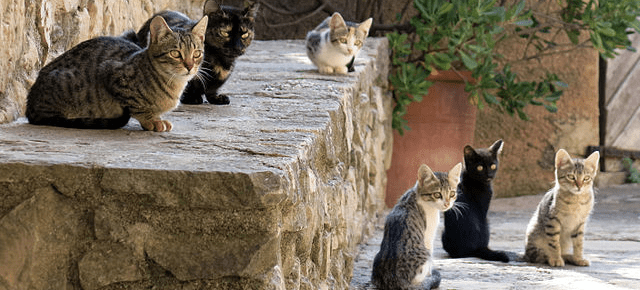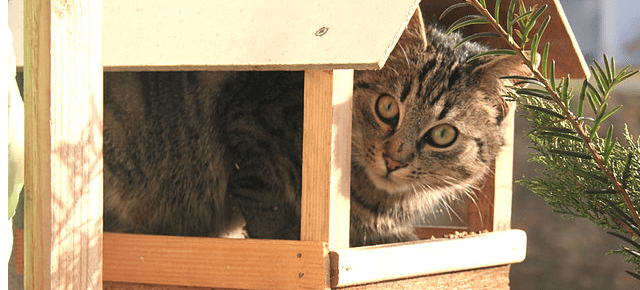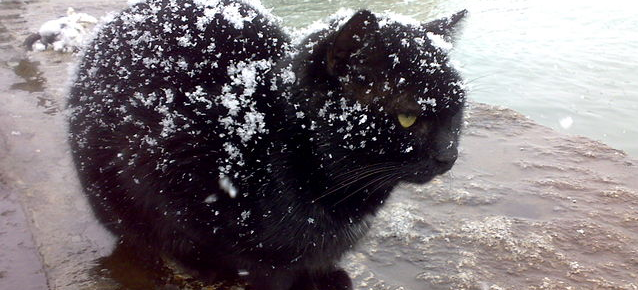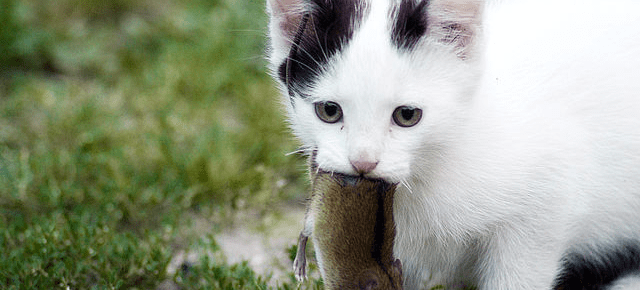You probably don’t know your cat as well as you think you do. According to a recent survey of cat owners in the UK, most people are pretty clueless about their cats’ lives.
Ecologist Jennifer McDonald and her team of researchers conducted a small survey of cat owners in the UK. They asked people how many dead animals their cats brought home in an average month, and then they kept tabs on the cats to see what they were really doing. Most people either wildly underestimated their pets’ hunting proclivities, or wildly overestimated their prowess.
The researchers say this was probably due to something called the “ownership effect,” which is a human tendency to think more positively about things that are ours — so cat owners who wanted to see their pets as tough or skillful were likely to overestimate their cats’ kill counts, while those who really wanted to think of their cats as gentle and harmless would underestimate the number of dead animals on the doorstep.
It’s probably the same reason that the late Mrs. Capone is said to have once assured police, “Al’s a good boy.” And like Al Capone’s mother, we’re probably all deluding ourselves about our pets.
The truth is that cats are predators. Really, really cute predators, but predators nonetheless. For millions of years, they have evolved to hunt and kill small animals, and evolution did its job pretty well. From their eyes to the tips of their tails, cats are lean, mean, completely adorable hunting machines. Instinct drives cats to hunt, whether they’re stalking and pouncing a toy mouse or a real one. If cats are indoors, they will be much happier if they can pretend-stalk birds through a window or have lots of prey-simulating toys to attack. Of course, if they’re outdoors, with access to real, live prey, they will go on safari.
That’s not a strike against cats. It’s just biology. At the end of the day, our pets will be happier, and so will we, if we see them as they really are, love them for it, and give them a safe way to indulge their wild sides. As it turns out, the environment may be better off too.
Cats vs Biodiversity

Picture: Enfo via Wikimedia Commons
Each of the cats in the study, published in the journal Ecology and Evolution, brought home fewer than ten kills a month, but animal behaviour experts think that cats only bring home about a third of their actual kills. The others get eaten at the scene of the crime, or played with until they fall apart, or just left behind, because cats apparently follow a very loose “two for me, one for the tall thing with the thumbs” rule.
So that’s fewer than thirty kills per cat every month, which still doesn’t sound like much — until you realise that in a town with 100 cats, that’s up to 3,000 small animals dying every month, added on top of the natural rate of predation in that environment. Keep in mind that domestic cats aren’t really a natural part of most ecosystems, which have their own natural predators. Suddenly adding domestic cats to that mix can take a toll on the local prey populations that may throw the whole ecosystem out of balance, especially if the birds, snakes, or rodents being eaten happen to be endangered already.
On the other hand, biologists don’t have good large-scale data on populations of prey species, so it’s hard to measure how much cats’ hunting habits are impacting prey populations. They can estimate, for instance, how many sparrows the average cat kills in a month, but they may not be able to tell how many sparrows are in the area altogether, which makes it hard to show impact. It’s also almost impossible to compare prey populations with cats to prey populations without cats, since you’d have to somehow keep cats completely out of an area for a period of time in order to get that information, and that’s not really practical.
The overall result is that cat owners don’t seem to realise — or want to realise — how their cat’s hunting habits add up to part of a much larger total impact on local ecosystems.
Time on the Outside

Picture: Jacopo Werther via Wikimedia Commons
If you think putting a bell on your cat will give the neighbourhood birds a fighting chance, think again. Researchers wanted to know which factors contributed to cats’ kill counts, so they kept track of several details of feline life and then compared those to the number of dead animals the cats brought home. Wearing a bell didn’t make any difference, it turned out, and neither did the type of food the cats ate. There was also no gender gap among feline hunters; female cats were just as likely to come home with a hunting trophy as male cats.
It seemed logical that just keeping cats indoors at night might help; after all, cats evolved as nocturnal hunters. That’s why they often doze so much during the day and decide that midnight is the perfect time to bat that jingly toy around. However, researchers found that cats that stayed inside at night but spent a lot of time outside during the day hunted just as much as cats who were out for the same amount of time at night. The amount of time a cat spends outside, regardless of the time of day, seems to be the thing that matters.
Younger cats brought home more prey than older ones, probably because they were in better physical shape. Chasing mice is a young cat’s game, it seems. Cats who lived near farmland also brought home more prey, which researchers say was probably thanks to the abundance of different types of wildlife in those areas. The implication could be that it’s especially crucial for cat owners in farming villages to keep their pets indoors — but that’s not a popular idea with cat owners.
Owners Side With Their Pets

Who, me? Picture: Karelj via Wikimedia Commons
The extent of cats’ hunting may have been a surprise to most owners, but even once cat owners learned about their cats’ hunting habits and the possible ecological impact, they were rigidly opposed to any measures that might restrict their pets’ freedom to wander. 60 per cent of people in the survey disagreed with the idea that cats were harmful to wildlife. Meanwhile, 98 per cent of survey respondents said that they opposed keeping their cats indoors full-time, which means that nearly 40 per cent of people in the survey knew their cats were harmful to wildlife, but still didn’t want to keep them indoors.
Even after researchers enlightened cat owners about their cats’ kill counts and their possible impact on local ecosystems, pet owners didn’t change their minds about keeping their cats inside.
People feel really strongly about the idea of taking responsibility for their cats, apparently. In fact, according to researchers, “Five owners felt the need to add unsolicited responses on the questionnaires themselves, further highlighting their negative perceptions regarding cat control.”
One owner said, “My cat chooses for herself whether to stay in or go out.”
Inside is Better

Picture: Maurice07 via WikOimedia Commons
However, the data indicates that cats are actually much safer indoors. Overall, indoor cats tend to have longer and healthier lives than cats who roam freely outside. Hunting is a dangerous business, and the cat doesn’t always win, so outdoor cats can be badly hurt if they tangle with the wrong wild animal — or the wrong cat, for that matter. They can also pick up infectious diseases and parasites from their prey, which means your cat may come home with fleas, ticks, or rabies along with that adorably shredded mouse.
The outdoor world is full of human-made dangers, too. Cars are a major cause of death for outdoor cats, and even roads that aren’t usually busy can be dangerous if a car comes by at just the wrong moment. All things considered, the American Veterinary Medical Association strongly recommends keeping cats indoors, where they’re safe and not wreaking havoc on the local ecosystem.
Picture: Chris
